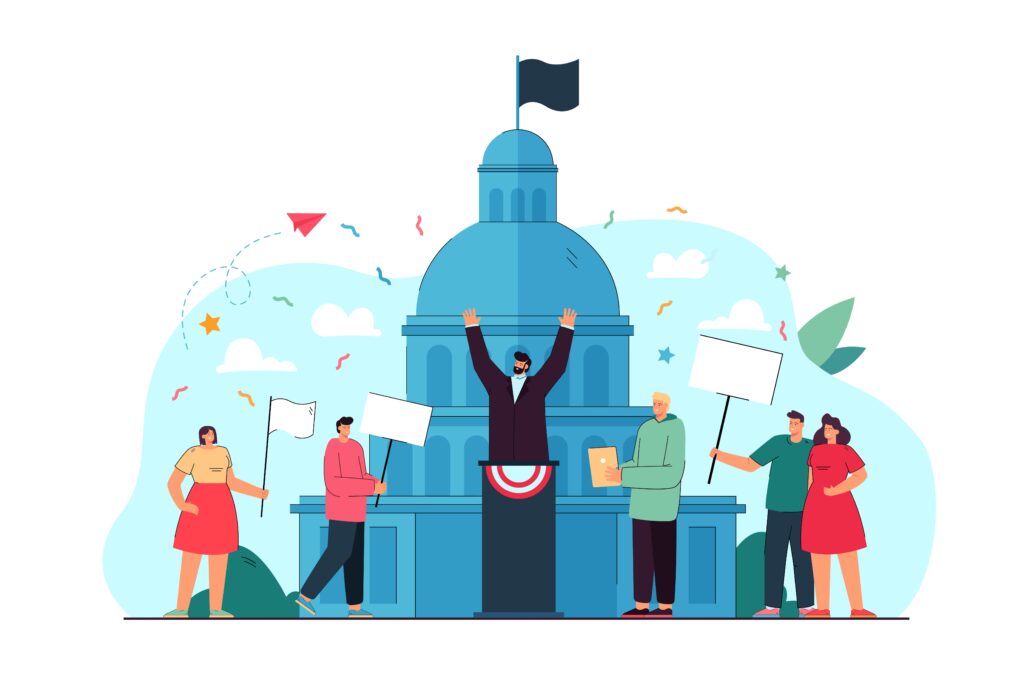Politics and creativity may seem like polar opposites, but when combined, they become a powerful force for change. Creativity plays a crucial role in addressing political challenges by encouraging innovative problem-solving, fostering dialogue, and engaging communities in meaningful ways. From creative public campaigns to innovative policy solutions, the potential for creativity to influence political landscapes is immense.
This blog explores how creativity can tackle some of the world’s most pressing political challenges and drive impactful change.
1. Understanding Political Challenges
Political challenges often stem from deeply rooted issues such as inequality, corruption, environmental crises, and social unrest. Traditional solutions may not always address these complexities, which is where creative approaches come in.
Examples of Political Challenges:
- Lack of public trust in institutions.
- Polarization in political discourse.
- Ineffective communication of policies.
- Limited public engagement in governance.
Why Creativity is Needed:
Creative solutions can bypass traditional bottlenecks, presenting fresh perspectives and fostering collaboration across diverse groups.
2. The Role of Creativity in Policy Development
Policy development is often seen as rigid, but creativity can inject innovative thinking into the process.
Creative Approaches in Policy:
- Using gamification to engage citizens in policy debates.
- Crowdsourcing ideas from communities for grassroots-level solutions.
- Incorporating storytelling to humanize policies and make them relatable.
Case Study:
In Iceland, crowdsourcing was used to rewrite the country’s constitution, engaging citizens in the political process and ensuring transparency.
Key Takeaway:
Policies built with creative input are more likely to resonate with the public and address their real concerns.
3. Creative Campaigns for Public Engagement
Public engagement is essential for addressing political challenges, but traditional methods often fail to connect with diverse audiences. Creative campaigns can bridge this gap.
Successful Creative Campaigns:
Political Art Installations
Street art and installations have been used worldwide to highlight social injustices and ignite conversations.
Interactive Media
Using videos, virtual reality (VR), or social media platforms to educate and mobilize citizens.
Humor and Satire
Satirical content simplifies complex issues and encourages public discourse in a light-hearted yet impactful way.
Example:
The Ice Bucket Challenge not only raised funds for ALS research but also showcased how creative campaigns can effectively mobilize global communities.
4. Technology and Innovation in Political Problem-Solving
Advancements in technology have opened up new avenues for creative solutions to political challenges.
Innovative Uses of Technology:
- AI and Big Data: Analyzing public sentiment to shape policies that reflect citizens’ needs.
- Blockchain Technology: Ensuring transparent and tamper-proof voting systems.
- Digital Platforms: Crowdfunding for community-driven political initiatives.
Key Insight:
Harnessing technology creatively can lead to more efficient governance and greater public trust.
5. Building Bridges Through Art and Culture
Art and culture have long been tools for uniting people across ideological divides.
Ways Art Drives Political Change:
- Promoting empathy by telling stories of marginalized communities.
- Highlighting urgent issues through music, theater, and film.
- Creating safe spaces for dialogue between opposing groups.
Notable Example:
Lin-Manuel Miranda’s Hamilton used creative storytelling to engage diverse audiences in historical political narratives, sparking renewed interest in governance and leadership.
6. Encouraging Grassroots Movements Through Creativity
Grassroots movements often rely on creativity to amplify their voices and effect change.
Strategies for Creative Grassroots Advocacy:
- Organizing flash mobs to draw attention to causes.
- Leveraging social media challenges for awareness campaigns.
- Designing visually compelling posters and infographics for rallies.
Example:
The Fridays for Future movement, led by Greta Thunberg, utilized creative protest strategies to demand action on climate change.
7. Challenges of Implementing Creative Solutions
While creativity has immense potential, it also comes with challenges.
Common Barriers:
- Resistance from traditional political systems.
- Misinterpretation of creative messages.
- Limited resources for large-scale implementation.
Overcoming These Challenges:
- Partnering with like-minded organizations to scale initiatives.
- Conducting pilot programs to demonstrate the effectiveness of creative approaches.
- Involving stakeholders at every level to ensure buy-in.
8. The Future of Creativity in Politics
As political challenges become more complex, creativity will be essential for finding effective solutions.
Future Trends:
- Increased use of virtual reality for policy simulations.
- Greater emphasis on storytelling in political campaigns.
- Collaborative platforms connecting creative minds with policymakers.
Vision:
A world where creativity drives inclusive, sustainable, and impactful governance.
Conclusion
Harnessing creativity to solve political challenges is not just a strategy; it’s a necessity. By thinking outside the box, fostering collaboration, and engaging citizens through innovative methods, we can address even the most daunting issues.
Creativity in politics holds the power to build trust, bridge divides, and create lasting change. It’s time to embrace this potential and reimagine the way we approach governance and societal challenges.

